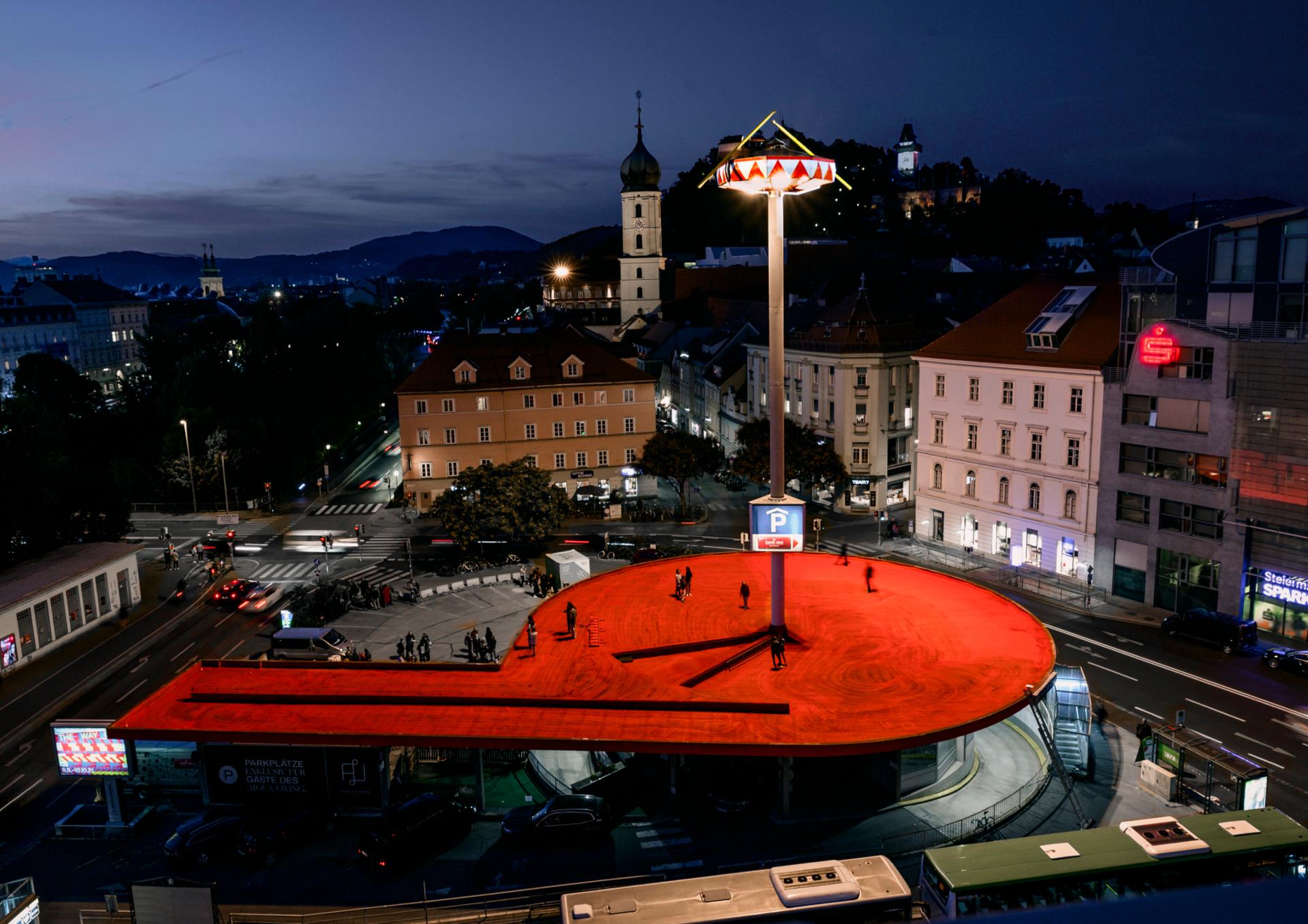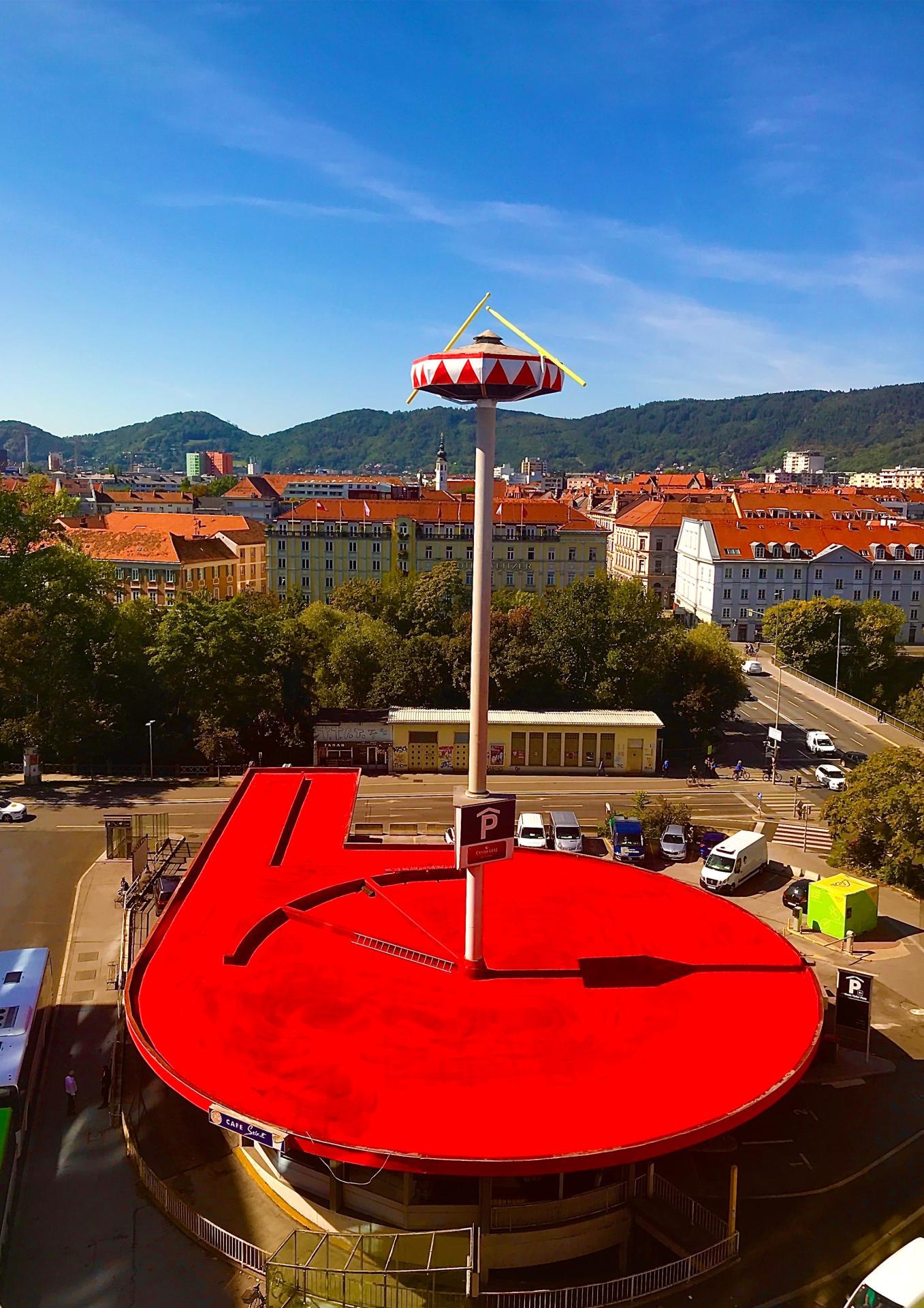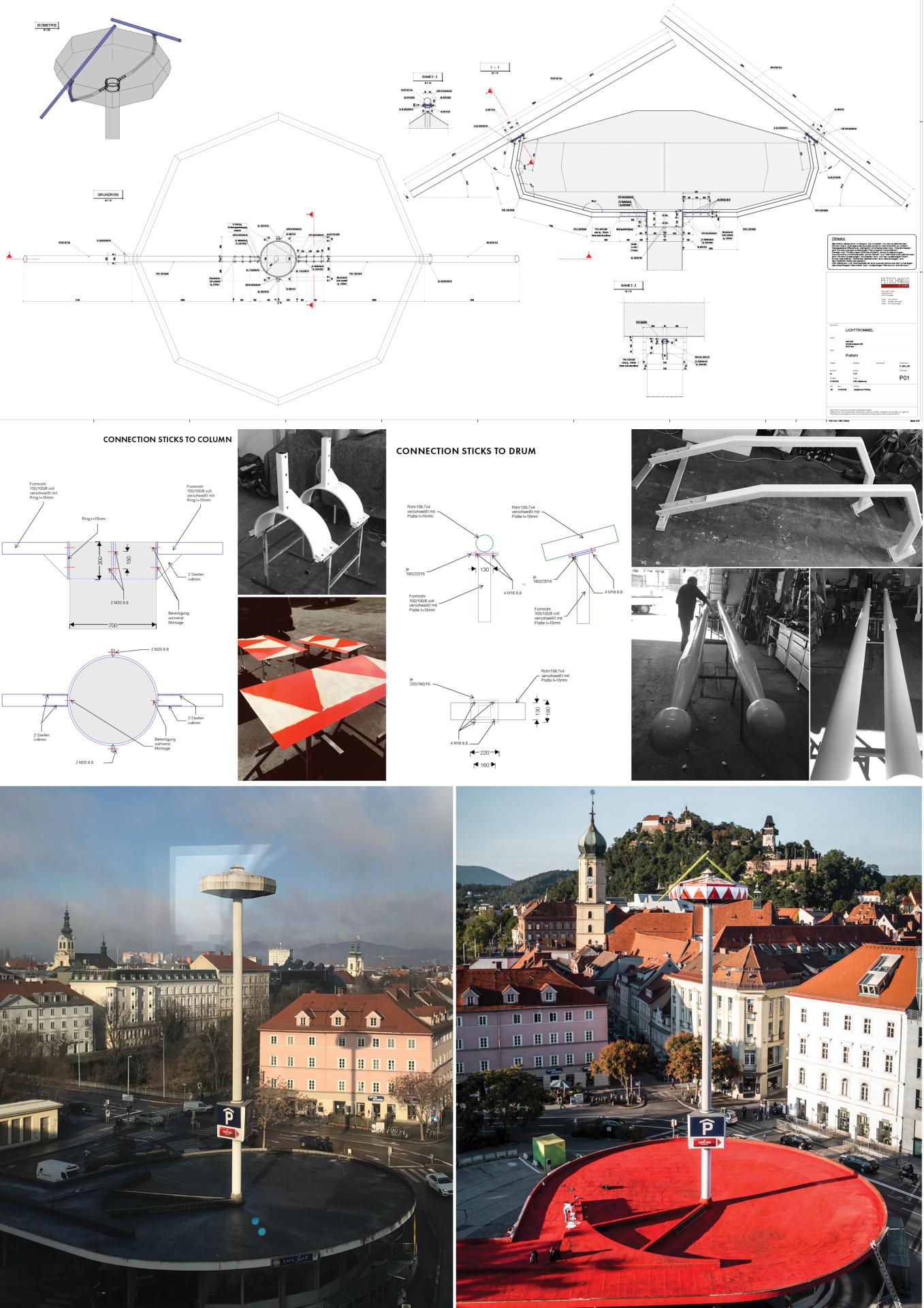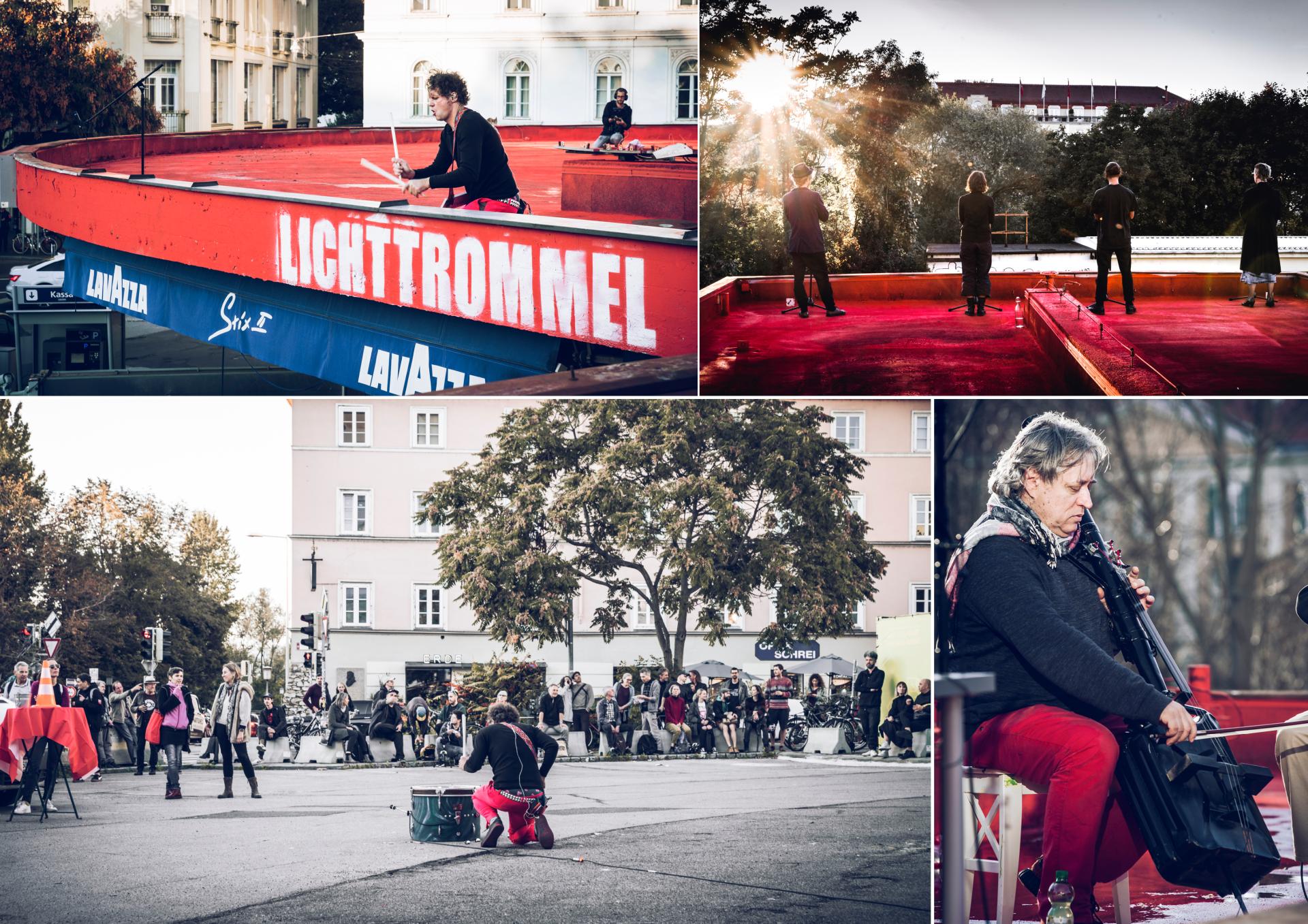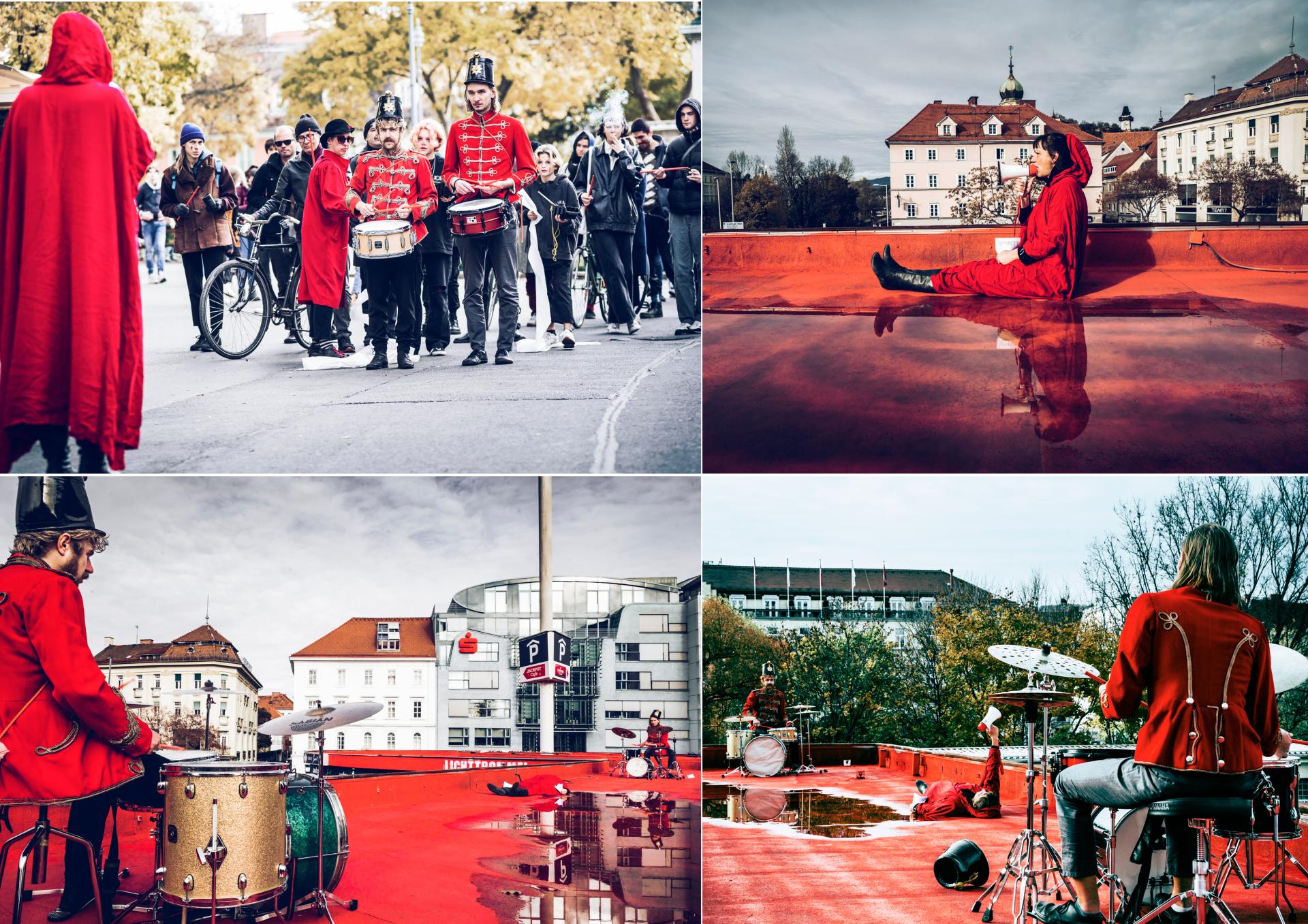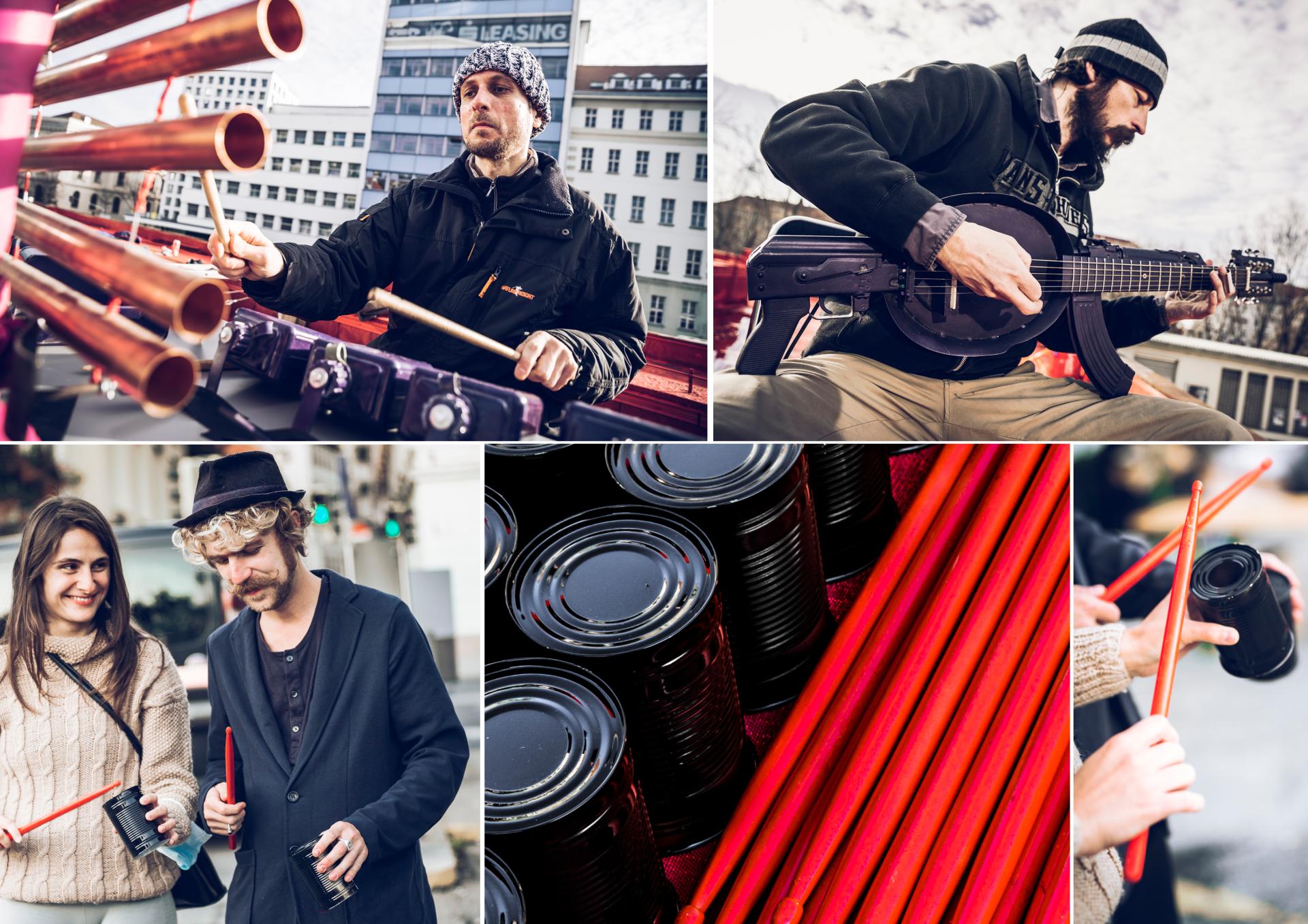LICHTTROMMEL(English: Light Drum)
Basic information
Project Title
Full project title
Category
Project Description
The neglected 28-metre high lamppost at Andreas Hofer square in Graz was transformed into a drum in reference to Günter Grass’ anti-fascist novel “The Tin Drum”, with the intention to raise awareness about the growing hostilities and racism amidst the pandemic and its aftermath.The project transformed the public space, neglected by locals into a unique work of art, while transdisciplinary events held at the square involved residents in the artistic process, encouraging social reflection.
Geographical Scope
Project Region
Urban or rural issues
Physical or other transformations
EU Programme or fund
Which funds
Description of the project
Summary
Covid19 pandemic has been fanning the flames of right-wing reactionary thinking across Europe for over two years now. Fear and suspicion of the “other” have seemingly become officially endorsed by governments closing borders in response to the pandemic.The universal values of respect for human life and diversity have been under threat as never before, and if we were to remain silent, we'd be guilty of complicity.
The aim of The Light Drum project is to draw public attention to the growing extreme right-wing movements with a visual installation in public space and a series of transdisciplinary events held around it. The light pole on Andreas Hofer square in Graz was transformed into a representation of the tin drum from Gunter Grass's anti-fascist eponymous novel. This installation, visible from many different areas of the city, serves as a beacon, embodying active public action and serving as a new platform for artistic interventions. Once per month since September 2021 local and international artists staged public interventions, such as performances, poetry readings, film screenings and concerts. These events were carried out on a different day each month for a duration of 1-2 hours. The artistic interventions were kept in the form of a public surprise, a spontaneous disruption of the routine. During each event the volunteers distributed drum sticks, metal cans and flyers to passers-by, inviting them to participate in the artistic process and to break the silence.
The format of the project is designed to reach as broad and diverse an audience as possible. It involves real-life, interactive artistic interventions that aim to raise public awareness on the theme of the project, and, just as importantly, emphasise the role of art in society amidst the pandemic. In this way art shifts beyond mere social commentary and becomes an active participant in shaping the urban environment, stimulating passers-by to reflect on topics that they otherwise might not engage with.
Key objectives for sustainability
The project focuses on economic, ecological and social sustainability, although in recent debates the perception of sustainability has shifted towards the idea that all sustainability is social. Before the implementation of the project, Andreas Hofer square was less of a product of targeted urban planning than a large "gap" created by the demolition of older buildings. Throughout the 20th century and until recently, the square has been the subject of many urban developmental projects. Despite the fact that Graz is a part of the UNESCO Creative Cities Network as a City of Design, all attempts to renovate the square have not been carried out.The transformed construction used to simply be a concrete platform on which the lamps for illumination of the square were placed, but even the State Archive doesn’t have its plan and it isn’t present on the geodetic maps. By revitalising this space the project transformed the existing facilities, rather than demolishing them and building new ones, reinforcing its position against new massive constructions and supporting the recycling of old objects, thus extending the offer of Graz as a City of Design. During the monthly art interventions flyers, wooden drum sticks and metal cans were distributed to passers-by, generating community involvement. The distributed tools were sourced from ecologically sustainable materials: the flyers were made from recycled paper, the drumsticks from sustainable timber, and the cans were donated by the public. This opens up another important topic of contemporary discussion related to the overproduction. The project created a new landmark in the city by transforming this neglected spot into a new public stage open to a variety of events such as performances, poetry readings, film projections and concerts, which ensures the circularity of the project. The two biggest art festivals in Graz, La Strada and Elevate, will use this space in summer 2022 to showcase art interventions accessible to the public.
Key objectives for aesthetics and quality
Throughout the 20th century and until recently Andreas Hofer square in Graz has been the subject of many urban development projects, none of which came to life till now. It was a familiar and at the same time a weird and boring, “enclave” in the city centre. Its central feature is the 28 metre high pole in the middle of the square, soaring towards the sky like a silent scream. Although most locals perceived it as a massive undefined monument, it was merely a lightpost, serving as the main source of light for the square. Despite the fact that Graz is a part of the UNESCO Creative Cities Network as a City of Design since 2011, all attempts to renovate the square have not been carried out.
Taking into consideration today's upheaval, caused by migration and the current changes in the world, all the more creative approaches are required in every area of our lives to bolster community-driven innovation and inspiration to move in a new direction. Transforming this neglected area of Graz inconsistent with the city’s architectural aesthetics was an imperative to awaken the passers-by's interest and inspiration in an object that was disregarded by the local authorities for over two decades, turning it into a landmark.One of the main features in the design of the Light Drum was to merge the rich history of the space with a contemporary style to create a new environment for the local community. While red and white colour combination was used to paint the tin drum as a reference to the drum used in the film based on the novel by Günter Grass, the platform under it was painted in red, drawing associations with the nazi concept of “Blood and Soil”. In order for the performing artists to match the installation environment, their clothing(mostly in red and black colour combination), was borrowed from the theatre costume collection of Theaterservice Graz. Small details like the drum sticks and cans distributed to the passers-by during the monthly events were coloured in red as well.
Key objectives for inclusion
The central location of the installation ensures that any intervention carried out there is widely accessible to the public. The regional bus station, the municipal energy company, the municipal service company, Erste Bank, an organic restaurant, a parking lot and other small local businesses are located at the square. The installation is visible from the Joanneumsviertel, a network of local museums, the Contemporary art museum and one of the most prestigious hotels, Das Weitzer. Next to the square flows the river Danube, along which runs a bicycle path. It is a place with high traffic density, both for cars and pedestrians. The diameter of the 28 m. lamppost is 5m. long. After obtaining the necessary permissions from the local authorities, the lamppost was covered with aluminium panels, painted in white and red, and 6 m. long drum sticks were attached to it with the help of 2 cranes.
A number of local and international artists, architects and artisans, as well as local and regional authorities were engaged in the design and implementation of the transformation of this space. So far 5 interventions were organised at the square with the participation of over 10 artists and art collectives. Public was informed about the project and the upcoming interventions through distributed flyers, facebook events and bi-monthly newsletter sent to over 1000 subscribers. In addition, information about the project is available in all neighbouring establishments , with a QR Code to access the project website. Since the opening of the installation in September, 2021 over 2000 people have participated in the artistic interventions thus contributing to the regeneration of the public space.
As a part of rejuvenating this space in the frames of the project, the redundant platform of the lamppost was transformed into an open air stage, allowing this neglected spot in central Graz to consequently serve the local communities.
Results in relation to category
Conducted transformation of the lampost structure resulted in its sustainable revitalization. The dimensions of the lamppost ensure the visibility of the installation from many points in the city. The colours of the tin drum attract the attention of passers-by, stimulating public reflection and reclamation of the neglected public space. Each of the interventions carried out to date on the 600 square metres of the roof placed 5 metres above the ground, catches the attention of anyone who passes by the square. Photographic evidence of the before and after is probably the most accurate description of the transformation achieved by the project. During the peak of the pandemic in Austria the majority of cultural institutions weren’t functioning, and only few cultural events took place since art spaces were forced to close down to stop the spread of the virus. While the interventions were hampered by the restrictions caused by COVID-19, since the opening of the project on Sept 23, 2021, there have been 5 art interventions with the participation of 10 local and international artists and art collectives. Over the course of six months of activity, more than 2000 people have contributed to regenerating the space, including architects, engineers, designers and craftsmen.The Light Drum revived the neglected public space,the existence of which was not consistent with the architectural style of Graz,giving it back to the residents as a tool to take action on reality, bringing together communities with contemporary artistic languages. Held in open air public space the events are accessible to the public with no no admission fees, while the multimedia content is accessible through QR code on flyers in neighbouring establishments.The improved common space will continue to serve residents of Graz beyond the project, providing a new open-air stage with opportunities for connection and social interaction, becoming the binding element that creates a sense of belonging in communities.
How Citizens benefit
Citizens of Graz have been involved in the Light Drum project continuously throughout every stage of design and implementation of the project. At the opening and at monthly art interventions, sticks, metal cans and flyers were distributed by project volunteers to everyone who was passing through the square. Public was informed about the project and the upcoming interventions through distributed flyers, facebook events and bi-monthly newsletter sent to over 1000 subscribers. In addition, information about the project is available in all neighbouring establishments , with a QR Code to access the project website. Since the opening of the installation in September, 2021 over 2000 people have participated in the artistic interventions thus contributing to the regeneration of the public space.
The neglected lamppost turned into a light drum is an association with a lighthouse from where everything is visible, in particular the platform/stage of the lamppost painted red as a reference to the nazi concept of “blood and soil”, bringing a sense of meaning to the public space.
While the project, centred at Andreas Hofer square, has a specific rather than generic audience and a social environment with borders determined through the cultural activities themselves, the art interventions took place in the square and in adjacent areas. As a part of rejuvenating this space in the frames of the project, the redundant platform of the lamppost was transformed into an open air stage, thus allowing this neglected spot in central Graz to serve the community, bringing a sense of meaning to Andreas Hofer square.
Physical or other transformations
Innovative character
Andreas Hofer Platz, one of the most important buildings of interwar modernism in Austria, was built according to plans by Rambald Steinbüchel-Rheinwall and completed in 1933. Throughout the 20th century and up to the present day, the square has been the subject of many urban development projects. Nevertheless, all those attempts have not been carried out. The Light Drum project can be categorised as a sustainable innovation, i.e. one that has changed and improved an existing product in a simple and durable way. This transformation of the square is a unique idea that introduces a new approach of urban design. Moreover, the project is innovative as it has improved the image and aesthetics of the square with its holistic approach to design contributing to equality and progress in our societies. The project has changed both the perception and the functional way of the lamppost. A new audience for the square, or an audience at all, has also emerged, expanding its everyday functionality by including literary symbolism and a place for political discourse. The project transformed the central square in Graz into an art space, expanding the cultural and touristic offer of the city of Graz. By producing and presenting contemporary art in the public space the project raised the value and prestige of the location. In the 21st century art should focus on public space by the belief that it’s role in society is not merely reflective, but transformational. By confronting passers-by with topics they otherwise might not engage with, art moves beyond mere social commentary and becomes an active participant in shaping societal discourse. This is a necessary evolution from the 19th century White Cube concept of the “institutionalised” presentation of art.In order to implement this concept, it is necessary to establish new venues in the city to bring such art into practice. In the pursuit of sustainable development it is important to practise "adaptive reuse" of retrofitting old objects
Learning transferred to other parties
Each city has neglected places and the Light Drum project is an example transformation of a public space sustainably, without building new structures and using the resources we have at hand. Community art spaces enhance social interaction and engagement and generate economic revitalization. The ability of art spaces to realise these outcomes is linked to their role as public spaces and their community development potential can be expanded with greater attention to this role.
White cube format is outdated and irrelevant in our reality, where art spaces are considered non-essential and indoor gatherings are prohibited to stop the spread of the virus. It is imperative for art to be open and accessible to the public. Showcasing art in public spaces not only revives the place and brings a meaning to it, but also contributes to engaging more people, who do not usually attend exhibitions. We believe that art should not be reserved for the “chosen” public, who have the privilege to attend galleries and museums. The Light Drum project emphasises the importance of improvisation in addressing the needs of a particular space, using what is at hand, being flexible, resilient and adapting to the current restrictions of the pandemic.
The Covid-19 pandemic is a global phenomenon, indifferent to national and regional borders, manifesting itself translocally. However, the social and political response to this translocal virus is characterised as a “nationalist reflex”: the measurements taken are almost exclusively at the level of national governments while international collaborative networks such as EU or WHO struggle to formulate a unified policy. Despite the inability of many local policies to face new global challenges, there is an increasing number of bottom-up experiences in which artistic practices activate the change in degraded or abandoned spaces and urban areas, giving shape to new urban landscapes, and The Light Drum can be considered as one of them.

